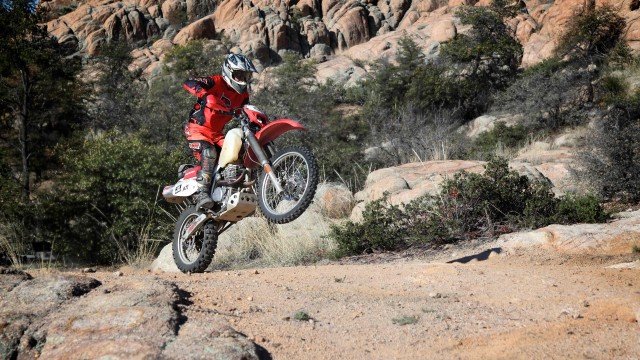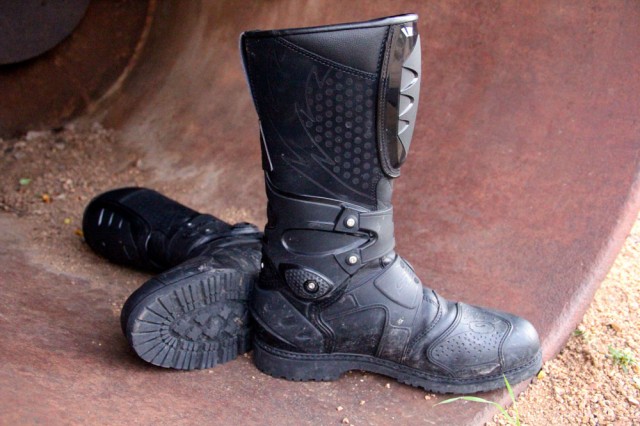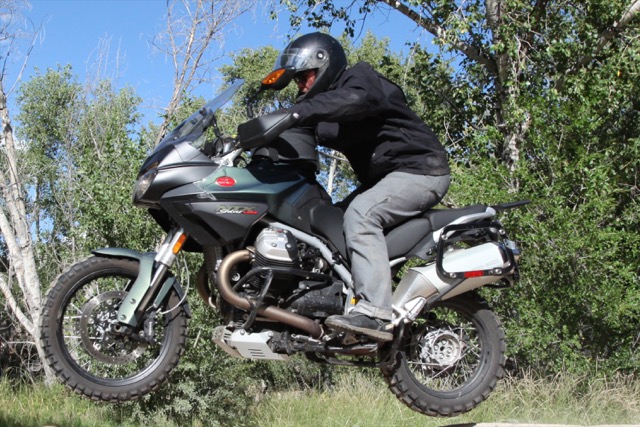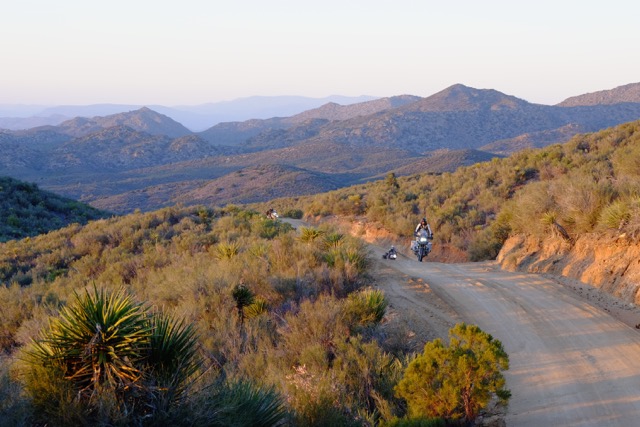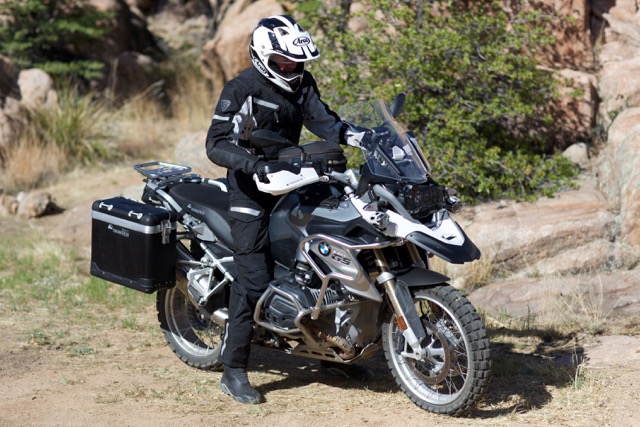For new adventure riders, purchasing all of the necessary gear can quickly become overwhelming. After the acquisition of the motorcycle itself, the additional outlay of cash to buy a helmet, jacket, and all the other essentials can put a tight squeeze on available funds. For many riders, properly chosen footwear fails to make the cut and improvised solutions are put to use. Hiking or work boots are the most common substitutions.
There’s a good reason every rider should wear proper motorcycle footwear and here it is: Every time you ride, even when doing it correctly, your feet hit the ground. If you’re lucky, your feet will arrive on terra firma as planned. But, there are always those times when your luck runs out, your feet meet the Earth with a violent impact, and maybe even get squashed by a hulking hunk of hot metal. It happens, and it sucks.
So, how does a new rider make an educated boot selection?
Protection
The first order of business is determining the level of protection you require. It’s a bit of a generalization, but the more rugged the terrain you traverse, the more likely you are to require heavy protection, and the more frequently you will put it to use. If you seldom ride off-road, you may not need the full-blown armor best suited to someone pushing their limits in the rocks and ruts.
It’s also important to understand the various protective elements provided by each boot and how they best serve the user. Shins are delicate things, so protective plating on the frontal aspect of the boot is ideal. Ankles are surprisingly delicate hinges and often benefit from support, even with mechanical augmentation with burly pivots. Most of the boots from companies like Sidi are built with crush-proof midsoles in the event your foot is run over or smashed by your own motorcycle. Some boots can have as many as a dozen protective elements. Before buying any boot, take inventory of the safety they provide and make sure they are sufficient for your particular needs.
Fit
It matters not if the boot of your dreams if it doesn’t fit. More than just an issue of comfort, it can eventually be an issue of safety. I have ridden with riders who have at some point in the day started to ride strangely as they nursed their sore and blistered feet through a ride. You can’t concentrate on your ride if your boots are pooling blood from broken blisters.
Weatherproofness
This is of particular importance to those riders embarking on longer multi-day or multi-week trips. Wet feet for a few hours can be miserable. Wet, and particularly cold feet for days on end, can lead to severe discomfort and compound blisters and other foot ailments. I’ve ridden through days of tropical rain on the edge of the Amazon Basin, my waterproof boots saving me from certain discomfort. If you do buy waterproof boots, understand what it takes to care for them and to maximize their waterproof and breathable properties. That often starts with proper sock choices. As we all know, and I hope we all do, cotton socks are a terrible idea.
Ventilation
This is a tough one as ventilation is often at diametric odds with weatherproofness. Sometimes you just have to make a choice. Are you more likely to suffer from hot or wet feet? Do you live in a desert or a rain forest? I would love to say that there is a boot out there that will be equally comfortable on a sweltering summer day as a wet fall ride, but I genuinely don’t think such a boot exists. Some boots not technically billed as waterproof do a respectable job of sealing out the elements.
Features
It’s worth evaluating every potential boot purchase for useful features. Do the boots lace up, or use buckles? Are the buckles replaceable and can the boots be resoled? What about the type of sole used. Do they have lugs for easy walking, even if they somewhat interfere with the pegs, or are the bottoms smooth for good peg contact at the sacrifice of walking traction? Be sure to evaluate the boot’s bells and whistles and practical features to ensure the boot offers all the benefits you require.
When I know I’m going to be on a long-haul pavement ride, I will often go with lighter, lower, less clunky motorcycle boots.
Value
This is a tough one. I’ve seen cheap boots give out in a single year’s use. I’ve known some people to put 10,000 miles of hard use on other boots just to get them to the point of being just broken in. No boots are cheap, but don’t assume the $250 boots are a better value than $500 boots. Those more expense boots might last longer by a multiplier of five or more.



